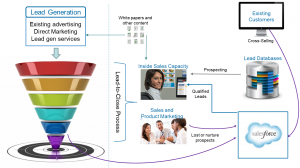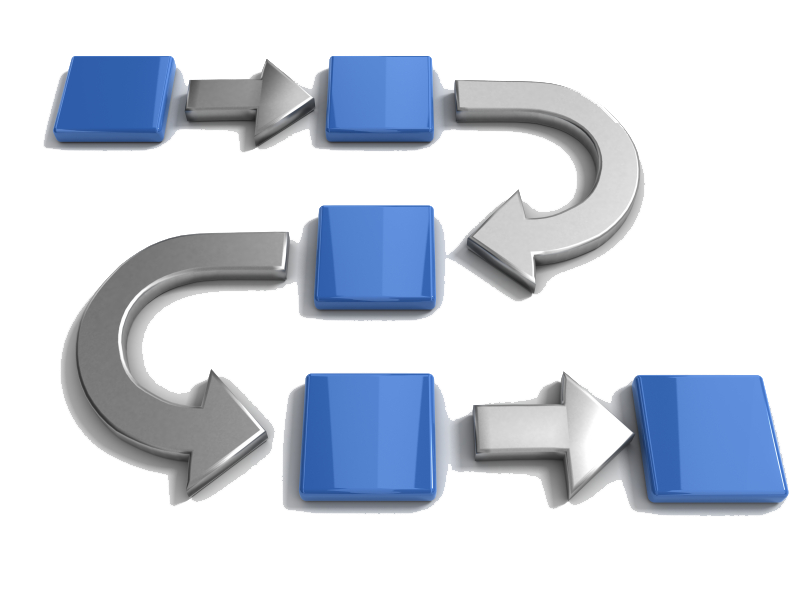Information and Communications Technologies Industry
Actionable Strategies has deep knowledge in the information and communications technology industry. Business and technology experience comes from software, telecommunications, hardware and services in established global markets. Our consultants have developed and launched new products, built customer-facing organizations and reinvigorated legacy products. Recent work has combined these models and approaches with innovative technologies to allow emerging markets to leapfrog incumbents in traditional economies.
In an interview about transforming software product development, Actionable Strategies’ CEO Jeffrey Wu provided pragmatic insights for mature organizations.
While startups have fluid job responsibilities and direct contact with customers, larger and more mature organizations have structure which often creates organizational seams. This may result in further inefficiencies such as the propensity to build everything internally.
Technology organizations may also lurch too far in the opposite direction. Self-service IT enabled with software tools asks business users to develop their own solutions which is also inefficient.
In the interview, the client example illustrates how thoughtful application of technology can accelerate time to market, eliminate friction, and reduce cost. It shows have technology organizations can balance needs for control, agility, operational efficiency, and cost containment.
 Actionable Strategies uses a proven strategic planning framework to help clients enter new markets. The framework helps technology clients introduce value-added services in emerging markets. Our experiences help companies address emerging challenges with competition, customers, regulators and value chains as the market matures.
Actionable Strategies uses a proven strategic planning framework to help clients enter new markets. The framework helps technology clients introduce value-added services in emerging markets. Our experiences help companies address emerging challenges with competition, customers, regulators and value chains as the market matures.
 This software company provides human capital management applications hosted in the Cloud. Marketing and sales were ad-hoc and revenue growth was stagnating. The situation demanded digital transformation to reach the small and mid-sized market segments. The client now has an end-to-end digital marketing and integrated sales process on the leading CRM and digital marketing platform. Marketing and sales use a single platform providing visibility of the sales funnel across the organization.
This software company provides human capital management applications hosted in the Cloud. Marketing and sales were ad-hoc and revenue growth was stagnating. The situation demanded digital transformation to reach the small and mid-sized market segments. The client now has an end-to-end digital marketing and integrated sales process on the leading CRM and digital marketing platform. Marketing and sales use a single platform providing visibility of the sales funnel across the organization.
Revenue is now forecast with greater accuracy. Metrics such as Customer Acquisition Cost and Customer Lifetime Value facilitate better investment decisions. This transformation will enable the client to grow and scale up both marketing and sales activities without constraints.
Transformation to digital marketing and sales required an evolutionary plan. Laying a foundation and then executing and improving over time enabled a smooth transformation from ad-hoc to digital and optimized.
Sales and Marketing Process
A defined inside lead generation process was created and initiated immediately. This function flowed qualified leads to senior sales professionals to develop and close. A raw implementation of Salesforce.com was used to capture leads while the enterprise migrated from two other CRM systems, one of which was homegrown.
Salesforce Implementation
 After definition of the full sales funnel that encompasses all of the products, the existing CRM data was loaded into a customized Salesforce implementation that supported the minor process variations across products and all professional services.
After definition of the full sales funnel that encompasses all of the products, the existing CRM data was loaded into a customized Salesforce implementation that supported the minor process variations across products and all professional services.
The next step was to migrate all marketing into Pardot using defined customer journeys that reflected the different products and potential paths in the lead-close process.
Integration
Linkage of end-to-end processes required integration. This included connection to the customer management system used to support existing customers.
Metrics
Metrics were defined at various stages of the funnel and for strategic purposes. At the top level, historical data was mined to determine:
- Customer acquisition cost
- Average customer tenure
- Customer lifetime value
Operationally, process metrics were applied to manage the business. Most importantly, visibility was gained into the depth and shape of the sales funnel.
- Sales cycle and time in each stage of the funnel
- Close rate and loss rate in each stage of the funnel
Outbound Marketing
Outbound marketing did not previously exist but was embraced by the company. Despite being a greenfield sub-project, it remained challenging to develop the required capabilities.
Process: Automated and integrated marketing using Salesforce and Pardot.
Drop Marketing: e-mail driven customer journeys.
Content: Development of digital content used across marketing touchpoints.
Marketing Partners
Increased execution capabilities were added using outside firms. The partners provided internal capacity and also help at customer touchpoints.
View the full case study for further details.
 This early stage media company sought to change media planning and buying by providing detailed purchasing behavior built at the household level. This would provide advertisers precise impact and target control by a large universe of demographic factors. The company used models that determined which household members viewed programming and advertisements. By linking the demographic data to purchase data, it was able to determine the relative effectiveness of ads on purchasing. The challenge was turning an idea into a profitable and scalable business.
This early stage media company sought to change media planning and buying by providing detailed purchasing behavior built at the household level. This would provide advertisers precise impact and target control by a large universe of demographic factors. The company used models that determined which household members viewed programming and advertisements. By linking the demographic data to purchase data, it was able to determine the relative effectiveness of ads on purchasing. The challenge was turning an idea into a profitable and scalable business.
As a result of the successful product launch, the client grew as a leader in the field. Eventually, it was purchased by a large media player leading to a highly successful and profitable exit for investors.
Initially, consultants helped the client navigate business issues related to launching a new product. Subsequently the significant technical challenges posed by the volume and frequency of data were addressed. Ingesting terabytes of real-time click data from millions of set-top boxes posed unique constraints on both technology and operating processes.
The work transitioned through the following phases:
- Business and Technology Strategy
- Product Management
- Scalable Operating Model
- Lean Product Development
- Information and Data Quality Management
- Analytics and Product Development
After initial product launch, consultants continued to refactor and add features to the product. Agile software development processes were used from the onset with great success.

Iterative development and the addition of new features continued until the company was acquired.
Agile software development approaches provide organizations with realizable benefits that are applied in the financial services community every day. By understanding the underlying principles, agile practitioners can better collaborate with business leaders who place decisions into a financial context. This article provides real-world examples of agile practices that provide three financially oriented benefits:
- Efficient use of capital
- Creation of exercisable options, which can also be thought of in terms of liquidity
- Risk management and control

Published in Cutter IT Journal, Vol. 20, No. 10



